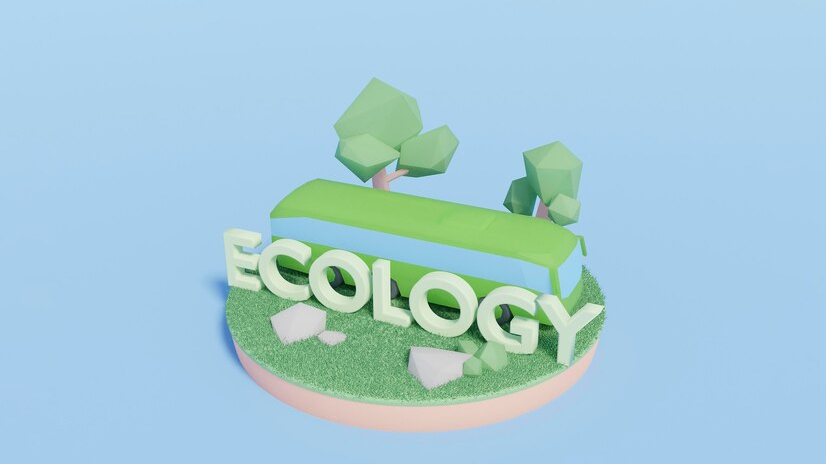In today’s increasingly eco-conscious world, sustainability is becoming a key consideration in all facets of design, including logo design. As businesses seek to minimize their environmental footprint, the concept of eco-friendly animation is gaining traction. This involves creating animated logos that not only capture the essence of a brand but also align with sustainable practices. This article delves into the intricacies of eco-friendly animation, exploring how animation agencies can adopt sustainable practices and create animated logos that are both visually appealing and environmentally responsible.
The Growing Importance of Sustainability in Design
Sustainability in design is about creating solutions that meet present needs without compromising the ability of future generations to meet theirs. In the context of logo design, this means using materials, techniques, and technologies that reduce environmental impact. For animation agencies, this entails rethinking traditional methods and embracing innovative approaches that prioritize eco-friendliness.
Understanding Animated Logos
Animated logos are dynamic, moving versions of static logos. They incorporate motion graphics to bring a brand’s identity to life, making it more engaging and memorable. An animated logo can convey a brand’s message more effectively, capturing attention through movement and sound. However, the process of creating these animations can be resource-intensive, posing a challenge for sustainability.
Principles of Sustainable Animation
To create eco-friendly animated logo, animation agencies need to adhere to several key principles:
-
Energy Efficiency: Minimizing the energy consumption of the animation process is crucial. This involves using energy-efficient hardware and optimizing software to reduce computational demands.
-
Green Hosting: Storing and distributing animations on servers that use renewable energy sources can significantly cut down on carbon emissions.
-
Sustainable Materials: Whenever physical props or sets are needed for animation, using recycled or biodegradable materials can make a big difference.
-
Waste Reduction: Reducing waste through efficient use of resources and proper recycling of materials used during the animation process is essential.
-
Eco-Friendly Workspaces: Creating a sustainable work environment, with green office practices such as reducing paper use, conserving water, and using energy-efficient lighting, supports the overall sustainability effort.
Tools and Techniques for Sustainable Animation
Animation agencies can leverage a variety of tools and techniques to create eco-friendly animated logos. Here are some of the most effective ones:
-
Digital Tools: Utilizing advanced animation software that is optimized for lower energy consumption can help. Programs like Adobe Animate, Blender, and After Effects offer features that support efficient workflows.
-
Cloud-Based Collaboration: Using cloud-based platforms for collaboration can reduce the need for physical travel and the associated carbon footprint. Services like Google Drive, Dropbox, and Slack facilitate remote work and efficient project management.
-
Optimized Rendering: Rendering is one of the most energy-intensive parts of the animation process. Optimizing render settings to balance quality and performance can significantly reduce energy use. Using GPU rendering over CPU rendering can also be more efficient.
-
Renewable Energy: Powering workstations and servers with renewable energy sources such as solar or wind can dramatically cut down on the environmental impact.
-
Sustainable Storytelling: Crafting stories and messages within the animation that promote sustainability can also contribute to raising awareness and encouraging eco-friendly practices.
Case Studies: Successful Eco-Friendly Animated Logos
Several animation agencies have pioneered sustainable practices, creating animated logos that are both eco-friendly and captivating. Here are a few examples:
-
Pixar’s Eco-Friendly Practices: Pixar Animation Studios has implemented several green initiatives, including using renewable energy sources and optimizing their render farm to be more energy-efficient. Their logo animations, while complex, are created with sustainability in mind.
-
Google’s Doodles: Google’s animated doodles often incorporate sustainable practices. Google is known for its commitment to renewable energy, and this extends to the processes used to create their animations.
-
Eco-Interactive: This animation agency specializes in creating animated logos and other content with a strong focus on sustainability. They use green hosting, energy-efficient tools, and promote eco-friendly messages through their work.
The Role of Animation Agencies in Promoting Sustainability
Animation agencies play a crucial role in promoting sustainability through their practices and the content they create. By adopting eco-friendly methods, they can set an example for others in the industry and influence broader change. Here are some ways animation agencies can lead the way:
-
Education and Advocacy: Agencies can educate their clients and audiences about the importance of sustainability and how they can contribute to it. This can be done through blog posts, social media, and incorporating sustainability themes into their work.
-
Sustainable Partnerships: Collaborating with other eco-friendly businesses and organizations can amplify the impact of sustainable practices. Partnering with green hosting providers, sustainable material suppliers, and renewable energy companies can strengthen an agency’s commitment to sustainability.
-
Transparency: Being transparent about the steps taken to reduce environmental impact can build trust and inspire others. Sharing sustainability reports and updates on green initiatives can demonstrate an agency’s dedication to eco-friendly practices.
-
Innovation: Continuously seeking out new technologies and methods to improve sustainability can drive innovation. This includes experimenting with new software, exploring alternative energy sources, and developing new techniques for efficient animation.
Challenges and Opportunities
While the push for sustainability in animation is promising, there are challenges to be addressed:
-
Cost: Sustainable practices can sometimes be more expensive, at least initially. However, the long-term savings from energy efficiency and waste reduction can offset these costs.
-
Technological Limitations: Not all animation tools and techniques are optimized for sustainability. Agencies need to stay updated with the latest advancements and advocate for more eco-friendly options from software providers.
-
Client Expectations: Clients may prioritize cost and speed over sustainability. Educating clients about the benefits of eco-friendly animation and showcasing successful case studies can help shift this mindset.
Despite these challenges, there are significant opportunities:
-
Market Differentiation: Agencies that prioritize sustainability can differentiate themselves in the market, attracting eco-conscious clients and talent.
-
Positive Impact: Beyond business benefits, adopting sustainable practices contributes to the global effort to combat climate change and preserve natural resources.
-
Innovation and Creativity: Embracing sustainability can lead to innovative and creative solutions that might not have been considered otherwise. This can result in unique, memorable animated logos that stand out.
Future Trends in Sustainable Animation
The future of sustainable animation is promising, with several trends emerging:
-
AI and Automation: Artificial intelligence and automation can optimize workflows and reduce the energy required for complex animations.
-
Virtual and Augmented Reality: As VR and AR technologies advance, they offer new ways to create immersive animated logos that are less resource-intensive.
-
Blockchain and NFTs: The rise of blockchain technology and NFTs (non-fungible tokens) presents opportunities for creating and distributing digital assets in a more sustainable way. However, it’s crucial to address the environmental impact of blockchain itself.
-
Sustainable Design Standards: The development of industry standards for sustainable animation practices can provide guidelines and benchmarks for agencies to follow.
Conclusion
Sustainability in logo design, particularly through the creation of animated logos, is an evolving field with significant potential. Animation agencies have a critical role to play in this transformation. By adopting eco-friendly practices, they can reduce their environmental impact, set industry standards, and create compelling, sustainable animated logos that resonate with audiences.
The journey towards eco-friendly animation involves continuous learning, innovation, and a commitment to sustainability. As more agencies embrace these principles, the animation industry can contribute to a greener, more sustainable future while continuing to captivate and engage through creative animated logos.










